
Excursão de viagem Escócia
Tudo sobre a Escócia

South Street St Andrews
South Street is where you will find St Mary's Quad
and the Gregory meridian. The oldest part of the University
and the town gate (west port). Madras College Blackfriars Chapel ruins, the Town Hall and many other historic sites.
O Porto Oeste
rua sul Santo André Escócia
O West Port foi construído por volta de 1580 e é o único portão em sua posição original que resta na Escócia. Não parece fazer parte de uma muralha da cidade que teria sido fechada em caso de invasão pelos ingleses, O portão foi amplamente remodelado em 1843. Acima do centro do arco está o brasão de armas de St Andrews


Gavin Douglas 1474 - 1522
Gavin Douglas nasceu em Tantallon Castle East Lothian.
Ele era o 3º filho de Archibald "Bell the Cat" Douglas 5º Conde de Angus. e tinha uma casa perto deste local. Um estudante da Universidade de St Andrews, ele era um poeta conhecido por seu "Palice of Honor" e para seus "Eneados" uma tradução da "Eneida" de Virgílio para o escocês. Ele foi Dean de St Giles Edimburgo em 1501 o Bispo de Dunkeld em 1515. Morreu 1522 Londres da Peste. Seu brasão uma vez estava acima da placa, veja abaixo como era.

Madras College
South Street St Andrews
Madras College first opened in 1833 and takes its name from founder the Rev. Dr Andrew Bell and the educational system he devised.
see his plaque beside Blackfriars Chapel.

Capela Blackfriars


A Capela Blackfriars foi construída em 1525 e danificada por um incêndio em 1547 e destruída em 1559 por um protestante durante a reforma. A estrutura na South Street é tudo o que resta.
Charles Lapworth Plaque
South Street St Andrews
Charles Lapworth was a teacher at Madras College 1875 – 1881.
A self-taught Geologist was the founder of a new geological time (The Ordovician Period)
He became a Professor of Geology in 1881 at Birmingham University.
Plaque Reads:
CHARLES LAPWORTH, LLD, FRS, 1842-1920
Between 1875 and 1881 Lapworth was a teacher of English at Madras College. In his spare time he studied the Rocks of extinct creatures called Graptolites to help unravel the complexities of these ancient rocks. As a result of his careful studies, he proposed anew division of geological time, The Ordovician Period that is now recognised and used internationally. He also correctly interpreted the Moine Thrust Fault Zone in the North West Highlands of Scotland as amass of older rocks pushed over younger ones, an idea which at the time conflicted with orthodoxy. He left St Andrews in 1881 to become Professor of Geology at the University of Birmingham.

Dr Andrew Bell Plaque
South Street St Andrews
Dr Bell was born in South Street St Andrews in 1753
he died in 1832. Son of Bailie Bell, Andrew was Founder of the Madras College in 1833 he pioneered
the Madras System of Education.
Teaching system which went worldwide,
where older children taught younger children.
Plaque reads:
The Reverend Dr Andrew Bell 1753 – 1832
An educational reformer and philanthropist. He was born in
St Andrews. It was while serving in Madras in India that he developed a form of schooling where
the older pupils taught the younger.
When he returned he introduced his “Madras” or monitorial system as an economical form of mass education. The idea spread, Madras Schools appearing in Canada and Australia. Among the other local benefactions was the Bell fund for the benefit of St Andrews. He ended his career as Prebendary of Westminster Abbey. Where he is buried.

Casa do Dr John Adamson


Dr John Adamson 1809 - 1870 viveu aqui 1845 - 1865
Foi médico e fotógrafo pioneiro.
Em 1841 ele também o primeiro retrato calótipo.
Ele também ensinou a seu irmão Robert e Thomas Rodger a técnica e a arte da fotografia.
Holy Trinity Church
South Street St Andrews
The Holy Trinity Church originally stood close to St Andrews Cathedral
and was built in 1144.
It has been in its present position in South Street since 1412.
Originally served by Roman Catholic priests
it changed with the Reformation in 1559
to Protestant and Episcopalian priests.
Since 1689 the ministers have been Presbyterian.
The Tower and two interior arches are the only original parts of the church from 1412 that remain.
1907 the church was demolished and rebuilt to the previous medieval church’s footprint and rededicated on St Andrews Day in 1909.

The Sharp Aisle
The Sharp Aisle, contains the tomb and monument to Archbishop Sharp (1618-1697),
Sharpe was murdered by Covenanters at Magus Muir 1697.
The Great East Window
Dated from 1910
The Good Physician
Dated from 1890 is the only surviving window prior to the reconstruction of the church in 1909.
John Knox Porch
In 1547 Holy Trinity was the scene of the first public sermon
of the famous reformer, John Knox.
He also preached in Holy Trinity in 1559, instructing residents of St Andrews to purge the city of "monuments of idolatry". Inspired by Knox's the local population rejected Catholicism, tore down statues and altars, and sacked St Andrews Cathedral.

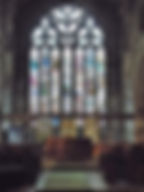
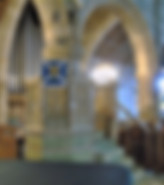
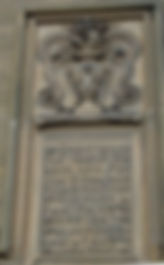
Câmara Municipal de Santo André
Jardins das Rainhas
Santo André
KY16 9TA
Escócia

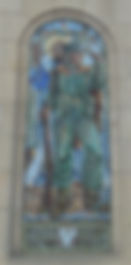
St Andrews Town Hall erguido em 1858 para fins municipais e públicos
Sir Hugh Playfair Reitor.
Memorial do soldado polonês St Andrews
Robert Burns Club Plaque
South Street St Andrews
St Andrews Burns Club Plaque
Can be found on what was the Royal Hotel where the club was founded
on 25th January 1869.
13 in the Robert Burns World Federation
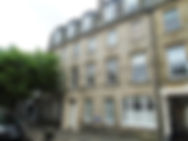


Estátua de Hamish McHamish
Pista Logies
Santo André
AK16 9NL
Escócia

Hamish McHamish era um gato ruivo (com 15 anos) que vivia em St Andrews, Escócia.
Ele se tornou uma estrela internacional quando um livro intitulado Hamish McHamish de St Andrews: Cool Cat About Town foi publicado. Hamish uma estrela de mídia social com sua própria página no Facebook https://www.facebook.com/HamishMcHamishOfStAndrews e conta no Twitter @Hamish_McHamish. Um gato nômade que foi cuidado por muitos dos moradores de St Andrews. Uma vez propriedade de Marianne Baird.
Bailie Bell's House and Foundry
South Street St Andrews

In 1620 Edward Raban came to
St Andrews and set up a printing press in a building on the corner of North Street and Church Street.
This was later demolished by Bailie Bell in 1740 so he could build his house. This house is where his son was born in 1753 (Andrew). Andrew was to found Madras College and the "monitorial system" of education.
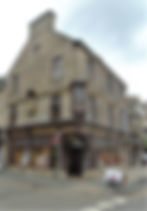
Royal Coat of Arms Tablet
South Street St Andrews
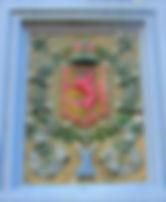
Jorge Martine de Claremont
George Martine de Claremont 1635-1712
Viveu em South Street Foi advogado escriturário de St Andrews e autor da Primeira história do Arcebispado:- "Reliquiae Divi Andreae"

George Martine FRS 1700 - 1741
George era um médico, cirurgião e geólogo, que mais tarde viveu em 56 South Street. Ele foi o primeiro a fazer um estudo cuidadoso do calor e escalas de temperatura, e fez a primeira estimativa -400F, da temperatura do zero absoluto, Ele fez o primeiro termômetro clínico de mercúrio útil em vidro. Aqui foi em 1730 que ele realizou a primeira traqueotomia na Grã-Bretanha
James David Forbes House
South Street St Andrews
James David Forbes was born in Edinburgh 20 April 1809
at 86 George Street.
He was educated at Edinburgh University in 1825. At 19, became a fellow of the Royal Society of Edinburgh, and in 1832
he was elected to the
Royal Society of London.
In 1859 he was appointed successor to David Brewster as principal of the United College of St Andrews, which he held until his death in 1868. It could be said he was first to study the heating of the earth.


James Boswell e Samuel Johnson
Este é o local do Glass Inn 29 South Street, onde Boswell e Dr Johnson jantaram em 18 de agosto de 1773.
Tivemos uma viagem triste em uma noite escura para St Andrews, onde chegamos tarde. Encontramos um bom jantar no Glass's Inn.
O Glass Inn sobreviveu por volta de 1830

Santo André
Atrações
Igreja da Santíssima Trindade
Lugares de Santa Maria
Santo André
KY16 9UY
Escócia
Túmulo de Tom Morris
Os Pendões
Santo André
KY16 9RG
Museu Bell Pettigrew
Edifícios Médicos Bute
Escola de Biologia
Terraço da Rainha
Santo André
KY16 9TS
Gin Darnley
Excursão à destilaria
Fazenda Newhall Leste
Celeiros do Rei
Santo André
KY16 8QE
Escócia
Igreja Paroquial de Kingsbarns
Rua principal
Celeiros do Rei
Santo André
KY16 8SS
Escócia
Cais de Santo André
Santo André
KY16 9RG
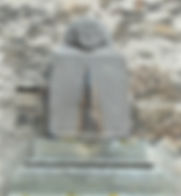
James Gregory
Linha do Meridiano
rua sul Santo André Escócia James Gregory foi o primeiro professor régio de Matemática.
Ele estabeleceu um Meridiano em 1748. Ele e dois outros foram os fundadores do cálculo.
Ele inventou o telescópio gregoriano Para uma visão mais aprofundada do trabalho de Gregory vá para


